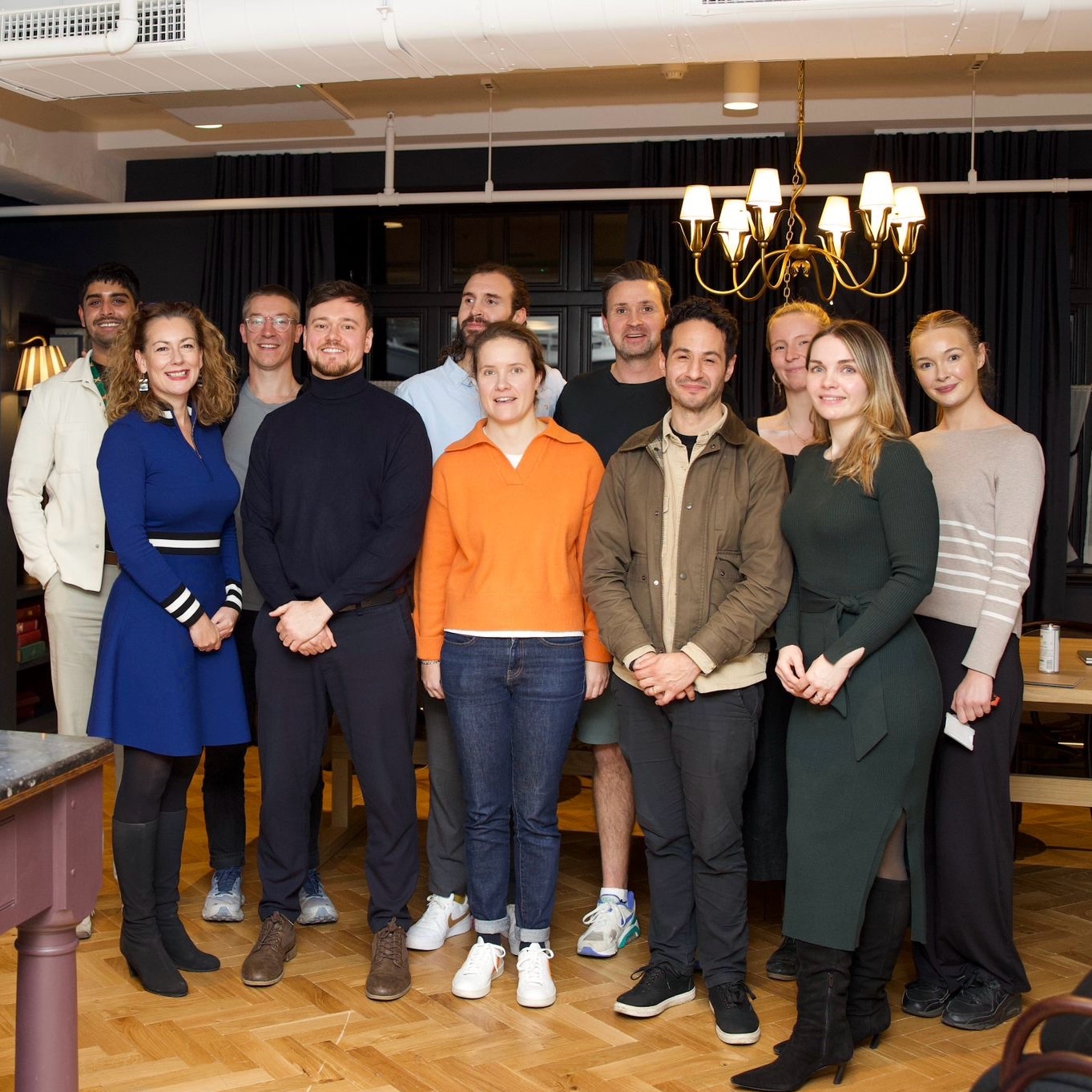Start-ups are adept at operating on limited time and resources. This means innovative and efficient approaches to growth, that don’t compromise on creativity. We explore how some of these principles might be applied to the world of SEO (search engine optimisation).
If there are a few things common to all startups across all industries, it’s survival and growth on restrained resources such as time and funding. This often means honing in on two key tenets - lean growth and savvy survival. Here we explore how start-ups can apply this to content distribution and SEO (search engine optimisation), by bringing everything in-house.
{{divider}}
Starting From Scratch
{{divider}}
Starting with the basics, every little decision has its own opportunities and trade-offs - from where your website is hosted, to how it looks and feels. These days, most platforms are increasingly optimised to help start-ups and sole traders easily build an aesthetic platform from scratch, while using plug-ins and widgets to navigate features such as SEO. Gone are the days of looking up paragraphs of HTML from Lisa Learns in order to integrate the features of your desire, now it’s mostly just a button or template away.
{{divider}}
However the host site makes a difference in more than just price, for example if looking to set up an e-commerce store you’ll have popular platforms including Shopify, Woocommerce, Wordpress and Squarespace to choose from. Whereas some will offer greater customisability and be easier to scale, others will be more user-friendly but have more closed-source coding, or different features and integrations available for use. A little like choosing between an i-phone and an android, it depends on what your needs are, and where you plan to go, so do your research, read the reviews, and have a go at the interface with an introductory free-trial.
{{divider}}
Host providers can usually be split up into those that are shared, private or dedicated. A shared server is the easiest and cheapest way to get started, it’s the most popular solution and includes everything you need. A virtual private server is ideal for those requiring additional power, control and flexibility, and a dedicated server is the best solution if you require maximum power, security and absolute control, although hosting will be expensive and more difficult to modify.
{{divider}}
It’s possible to upgrade from one package to another as you expand, but depends on how quickly you expect to see growth and adaptations to changing needs. The type of package you sign up for places a limit on the number of visitors that can access your site and how much data can be transferred from your site to them. Which means, if your startup outgrows your hosting package, people aren’t going to be able to access your website.
{{divider}}
The next steps are to secure the essentials of making sure the platform is mobile-friendly (or you will miss out on a large amount of traffic), accessible through multiple browsers and versions (using a browser checker, you can discover the shortcomings of your website by testing and fixing browser loading issues that may impact how the end users use your websites online), has a fast page load speed (on mobile, desktop and every page), and a user-friendly design that customers can easily navigate.
{{divider}}
Key Words
{{divider}}
Search engines use ‘keywords’ to rank websites according to relevance when it comes to searches. Keywords are the most commonly used search terms that people use when looking up a topic, and they can be simple or complex depending on consumer and industry needs. A good website will have keywords mapped to specific pages, and those pages will have choice keywords sprinkled throughout. You can lookup popular keywords for your industry theme, or use tools and platforms such as ahrefs to garner greater insights, this is called on-page optimisation.
{{divider}}
However, keywords have to be integrated into an article in a way that is natural, simply trying to cover as many keywords as possible with the sole aim of ranking better is known as ‘keyword stuffing’ and is likely to increase bounce rates by detracting from the quality and value of the content. Therefore the best use of keywords is to place the focus on detail rather than volume.
{{divider}}
Telling a search engine where all your pages are on your site can be done through a site map (XML sitemap), which is an index of all the pages on your domain. This points search engines in the direction of where to visit for relevant rankings. In addition, a robots.txt file helps search engines know which pages to discover along with any specific instructions (such as giving credit to a different website if a blog piece has been reposted from elsewhere using a canonical URL) - most platforms these days have such features automatically available, but they may need a few tweaks here and there if seeking to make specific modifications.
{{divider}}
Backlinks
{{divider}}
Off-site promotion is a means of getting your website noticed by new audiences, through other networks and pages. A large part of this is through backlinking - which are incoming hyperlinks from one page to another website. This can be both organic and deliberate. With organic growth, other websites will start linking to your page or articles without being contacted by you directly, often because they have an incentive to share your content and the topics that it touches on. This is especially relevant when it comes to value-creation and unique thought pieces, interviews or insights. The number of backlinks a website has is a pretty accurate indicator of how popular, authoritative, or important a website is relative to its competitors.
{{divider}}
More deliberate growth and backlinks can be facilitated through collaboration. The ultimate goal of off-site SEO is to accumulate more positive signals for your brand, including - brand mentions linking back to your site, claiming local profiles for your brand in each available location, achieving press, partnership portfolio pages, case studies, research reports, white papers and free guides, infographics, videos, entertaining memes and whatever else you can think of, especially as visual data is processed much more rapidly than text. The most shareable organic content is that which evokes a visceral response in its readers.
{{divider}}
Another useful off-site strategy is to interact with other pages in your network, for example by commenting on other websites and discreetly leaving a hyperlink, listing your page on popular forums or directories, and enlisting your services on third party marketplaces such as HARO - Help A Reporter Out, who are actively searching for industry experts to interview, promote and amplify.
{{divider}}
However, when it comes to SEO, there are ‘black hat’ and ‘white hat’ techniques. Black hat techniques should be avoided, and are likely to be penalised. They include paying for backlinks in an effort to buy as many ‘signals’ as possible, in a shorter space of time. Just as Instagram has its own set of ever-evolving API’s, Google has complex algorithms to detect such behaviour, and the types of host accepting payment for such features will usually be of lower quality or ranking, which will harm brand efforts in the long-run. Quality over quantity matters more over time.
{{divider}}
Know Your Audience
{{divider}}
Google doesn’t care (that much) whether you’re a start-up, a major financial institution, or a small retailer, it’s priority and it’s value proposition is to connect people with the most relevant content for their search query. The SEO requirements for a start-up are therefore the same as they are for some of the world’s largest brands, what differs is the scale of the challenge.
{{divider}}
Content curation is becoming increasingly important as brands recognise that taking care of consumers’ limited time is a way to both add value to their lives and build a relationship with them, however it’s not just about creating, but encompasses finding, rating and aggregating. By using long-tail keywords, pulling in RSS feeds, and sharing relevant content, you provide more value to your current community and new visitors. Great content is:
{{divider}}
- valuable: provides content that your users won’t find anywhere else
- link-worthy: organically earns links from trust-worthy websites and is easily shareable
- varied: uses a variety of media including videos, images and multi-media to stay engaging, informative and relevant
- optimised: has strong fundamentals in terms of on-page and off-page optimisation
- actionable: is able to convert readers into users and customers
- {{divider}}
Start-ups are innovative by nature, meaning that they probably already have unique angles, stories and understandings ready and available to leverage. The key is to take your competitive edges and run with them in a way that other brands cannot, by addressing audience concerns in a way that others don’t.
{{divider}}
A great way to gain unique insights into what your customers might be looking for is to use website such as Google Trends or AnswerThePublic. If you’re in a nascent market or emerging industry, you could be catering to a need that people are not overly aware of yet, and will therefore have to investigate alternative strategies including thinking about other relevant sectors that might attract similar audiences with overlapping interests to your page, in order to discover and educate consumers about your unique offering.
{{divider}}
The top 10 most popular websites in the world according to Alexa Rankings have one key theme in common - they encourage user generated content. Facebook, Youtube, Google, Reddit all allow their consumers to co-create their front pages. This comes down to both relevance and trust, as well as ensuring that users see what they want to see, studies show that users also trust user-generated content (including authentic product reviews) more than top-down patriarchal relationships and traditional media. People like to feel connected to a brand and part of a community, so boosting user-generated content means improving social networking, peer reviews and word of mouth through operational excellence, delivering on customer needs, and fostering strong relationships physically and virtually.
{{divider}}
Values Over Vanities
{{divider}}
There are many tips and tools available, including less commonly discussed strategies for ‘industry insiders’. However whereas many will use shortcuts in order to gain quick results and ‘game the system’, these can have negative repercussions in the long-term, and it is unlikely that a giant such as Google has a simple ranking algorithm, rather, they leverage intelligent AI with causal ambiguity, to create a complex, adaptive system. This will almost always favour honest and organic growth and value creation over monetisation.
{{divider}}
Even though fast, sustainable growth is everything to a startup, and search optimisation is a slow, gradual process where shortcuts cause more problems than they solve, many agencies can charge expensive overheads, and rely on such techniques due to the pressure to perform. A little like the political landscape, where short-term promises and strategies are the easiest means by which to secure more immediate votes and clients, this can lead to quick-wins and short-sighted behaviour at the expense of longer-term goals.
{{divider}}
However automation is still a great way to save time and resources by outsourcing more repetitive tasks, so that your team can focus its efforts on other elements. This can include keyword and backlink automation, so that you don’t need to manually repeat keyword searching or backlink monitoring of your profile, setting up notifications for issues such as outdated or broken links, slow loading times or high bounce rates, automated lead generation and email lists, social sharing and page formatting. The more you automate, the more time you can spend focusing on the tasks that need human attention – like content creation and strategic decision-making, which is the only crucial ‘hack’ for start-ups.
{{divider}}
Being able to track your performance and progress is free using platforms such as Google Analytics and Google Search Console (although they will often try to promote some pricey paid extras such as Google Advertising). However this is an important way of reporting and fixing small URL errors and other simple changes that can make a big difference over time, as well as identifying which topics may be performing more strongly than others.
{{divider}}
Alongside looking internally, platforms such as SEMrush are great for looking externally, and performing a competitor analysis. Similarweb is another great platform, and by using such services you can see where high-performing competitors get most of their best backlinks from. This will allow you to reach out the same sites and start relationship and link-building.
{{divider}}
If you want to get a good idea of how engaging your content is, you need to look at metrics such as the bounce rate, average time on page, and number of pages visited per session. If a user clicks on your site but doesn’t spend any meaningful amount of time there, this is known as ‘pogo-sticking’, and you may spend a large amount on Ads attracting customers to your site, only for them to leave after being unable to find what they’re looking for. However this is usually multi-factorial and influenced by many issues including UX design, and A/B testing of different landing page layouts. Human psychology is not always straightforward, reasonable or rational.
{{divider}}
Stay Unique And Timeless
{{divider}}
In extension to sourcing your competitive edge, and the raison d’etre that makes you stand out - targeting related topics that are slightly more out there or less competitive can help you rank quicker for those related search terms, as there will be fewer high quality sites covering them.
{{divider}}
For example, if you were a travel blog, whereas many competitors may have covered high-volume tourist hotspots including Bali or Sydney, fewer websites may be covering more remote or niche, but equally valuable spots, or writing about novel technologies or insights in the same space. You’ll still be hitting audiences interested in travel overall, but opting for an underserved, niche segment of the market is a key win-win strategy for many resource constrained start-ups, and often a blind-spot that many larger companies miss.
{{divider}}
In summary, focus on being the tortoise over the hare to ensure sustainability and longevity, create value, foster relationships, don’t take shortcuts, and allow both chance and strategy to meet opportunity by securing strong fundamentals, staying relevant, catering to a variety of unique niches, and adding a uniquely human touch!
{{divider}}

.avif)



.png)
.avif)


.avif)


.avif)
.avif)



